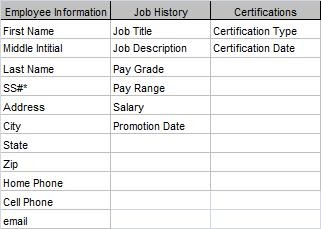Good afternoon everyone,
I'm working on a new project that tracks court letter updates.
I have two tables currently, one that holds client information (Name, Address, Attorney contact info), and a second that holds the court information (Docket number, Judge, court date, etc.)
I've set up the Court info table to have each docket number as a new record, and have the ClientID as a foreign key to the client table in a one to many relatonship.
My query returns the most recent information for each client by looking at the court date, and also indexes the judges name to display a client twice if they have a pending case with more than one judge.
My question is, given the two indexes of ClientID and Judge, is it possible to display all dockets numbers in the table that match those two criteria in one textbox in a report? For instance if there are six docket numbers in a table for Client A-- four for JudgeA and two for Judge B-- can I have the report display:
ClientA | JudgeA | Docket 1,2,3,4
ClientA | JudgeB | Docket 1,2
I'm working on a new project that tracks court letter updates.
I have two tables currently, one that holds client information (Name, Address, Attorney contact info), and a second that holds the court information (Docket number, Judge, court date, etc.)
I've set up the Court info table to have each docket number as a new record, and have the ClientID as a foreign key to the client table in a one to many relatonship.
My query returns the most recent information for each client by looking at the court date, and also indexes the judges name to display a client twice if they have a pending case with more than one judge.
My question is, given the two indexes of ClientID and Judge, is it possible to display all dockets numbers in the table that match those two criteria in one textbox in a report? For instance if there are six docket numbers in a table for Client A-- four for JudgeA and two for Judge B-- can I have the report display:
ClientA | JudgeA | Docket 1,2,3,4
ClientA | JudgeB | Docket 1,2








